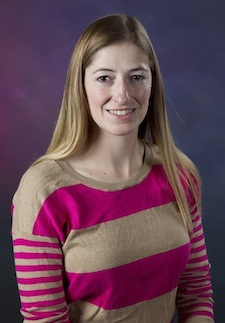Seminar: "Phase field dislocation dynamics (PFDD) for nanoscale fcc metals"
Events | Mechanical Engineering
Seminar: "Phase field dislocation dynamics (PFDD) for nanoscale fcc metals"
May 7, 2018 8:30 AM

Speaker
Dr Abigail Hunter
Location
ESB 1001
Type
Seminar
In the recent past, applications for nanoscale devices seem to be ever increasing creating a growing need to ensure reliability and predictive modeling capabilities. Consequently, this has motivated extensive research and discussion on the mechanical behavior and deformation mechanisms in nanocrystalline metals. As characteristic length scales shrink ( 100 nm) in face-centered cubic (fcc) metals, deformation occurs predominantly through the motion and interaction of partial dislocations and grain boundary driven mechanisms. This is in contrast to bulk and course-grained material counterparts that typically deform through perfect-dislocation mediated slip. This transition in deformation mechanisms from conventional slip to partial-mediated slip can alter many elementary dislocation processes, such as cross-slip, nucleation, lock formation, and grain boundary mobility, and also result in unique material behavior including high strength. Furthermore, it has been shown that in nanoscale grain sizes grain-boundary driven mechanisms such as dislocation emission and absorption at grain boundaries, grain boundary sliding, and deformation twinning become dominant.
The purpose of this research is to investigate these nanoscale deformation processes through the development and application of a 3D phase field dislocation dynamics (PFDD) model. The phase field approach is centered on energy minimization and, hence, evolution of the phase field variables has a direct dependence on system energetics. The total system energy is comprised of several contributions that can depend on the problem of interest. Most common are (isotropic or anisotropic) elastic contributions that take into consideration dislocation-dislocation interactions, interactions with an applied stress, and a generalized stacking fault energy term. In particular, the latter term is used to model extended stacking faults and partial dislocations and can be reduced in the case of perfect-dislocation mediated slip. In the case of partial-mediated slip, the 3D PFDD model is informed by density functional theory (DFT) in order to incorporate a dependence on the entire material -surface as opposed to only one or two stacking fault energies. More recently, the formulation has been extended to consider bimetal fcc/fcc interfaces, hence the following effects have been included: 1) stresses induced at the interface due to the lattice mismatch (misfit or coherency stresses), 2) elastic moduli mismatch (Koehler forces or image stresses) and 3) formation of the residual Burger’s vector left in the interface following slip transmission of a dislocation.
BIO Sketch | Dr. Abigail Hunter is a staff scientist at Los Alamos National Laboratory (LANL) in the Computational Physics Division. She received a Ph.D. in Mechanical Engineering from Purdue University in 2011, and a B.S. degree in Mechanical Engineering from the University of Utah in 2006. Following her Ph.D., she became a postdoctoral research associate at LANL in 2011, and converted to a staff scientist in 2012. Her research focuses on nanoscale deformation mechanisms in metals, phase field modeling for dislocation dynamics, and continuum scale strength and damage model development for the mechanical response of metals under dynamics loads.